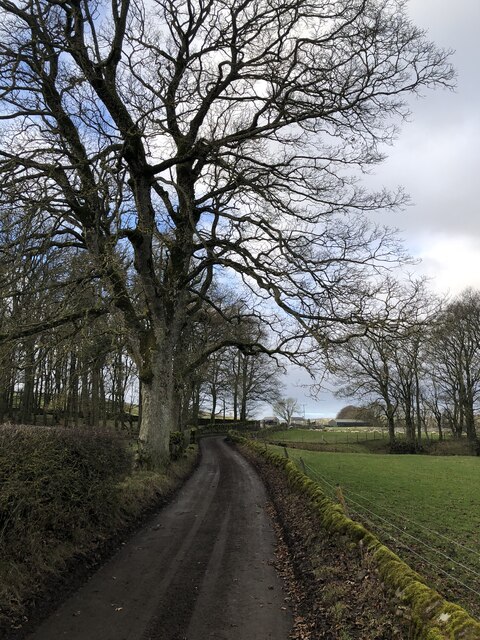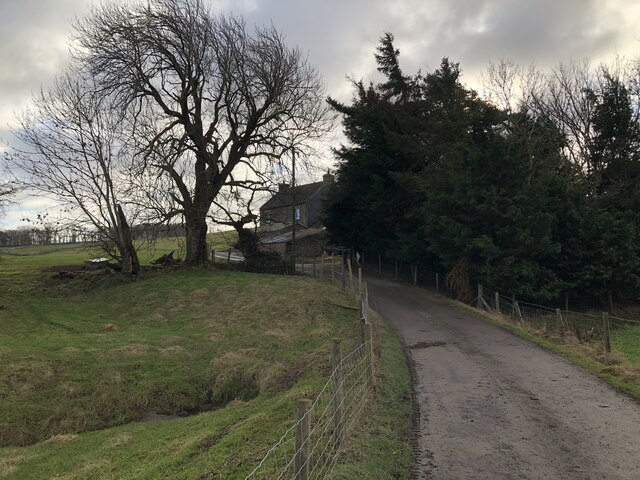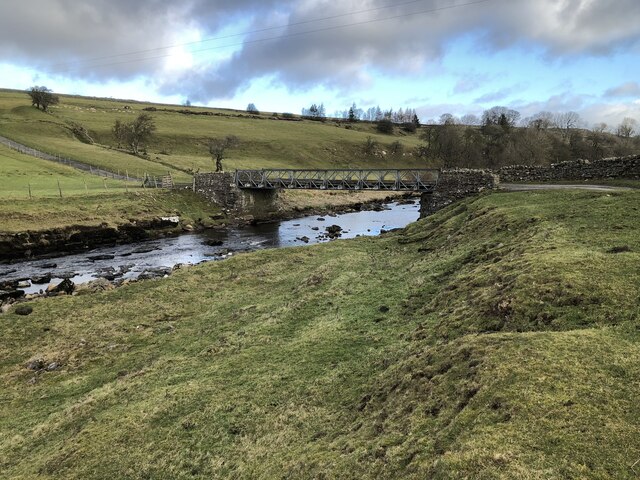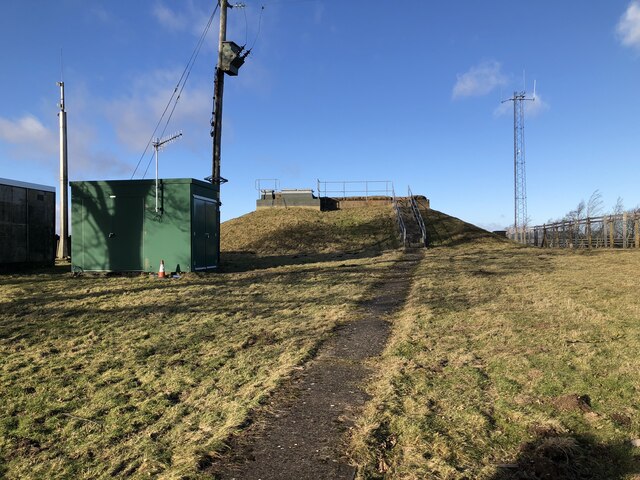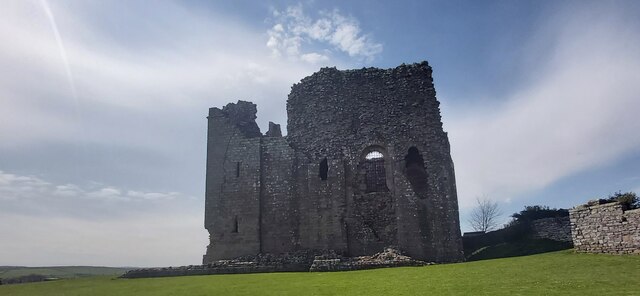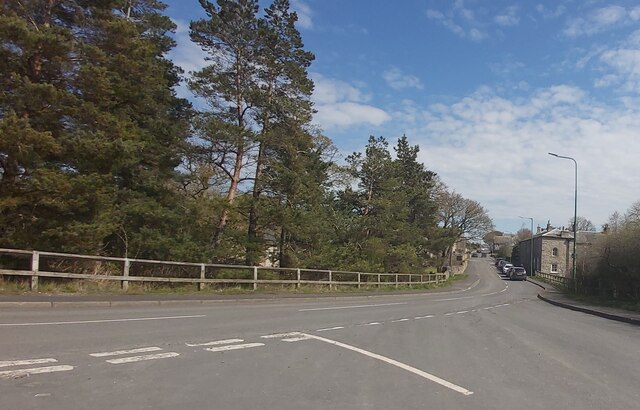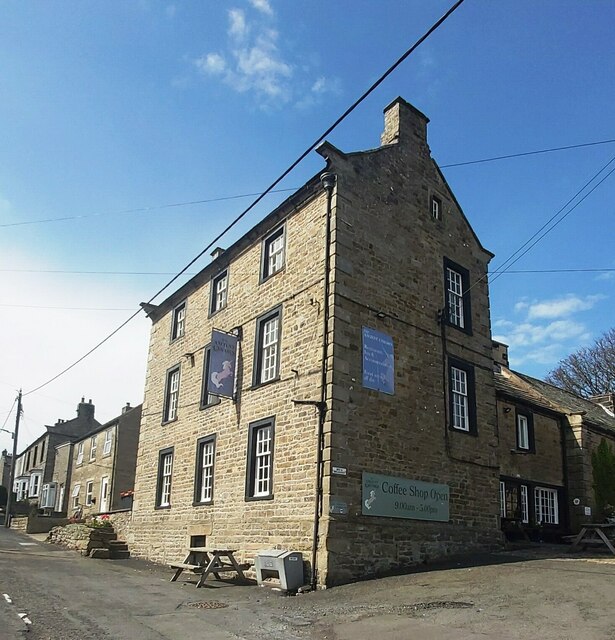Square Plantation
Wood, Forest in Yorkshire
England
Square Plantation
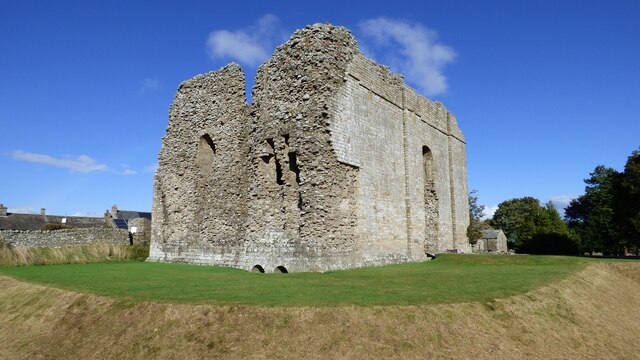
Square Plantation is a picturesque woodland located in Yorkshire, England. Situated in the heart of the county, the plantation covers an area of approximately 100 acres and is known for its dense forest and towering trees.
The woodland is predominantly made up of native tree species such as oak, beech, and birch, creating a diverse and vibrant ecosystem. The trees form a thick canopy, allowing only dappled sunlight to filter through, creating a serene and tranquil atmosphere.
Square Plantation is home to a variety of wildlife, including deer, squirrels, and a plethora of bird species. The woodland provides a safe haven for these creatures, offering ample food and shelter. Bird enthusiasts can often spot woodpeckers, owls, and countless other feathered friends within the plantation.
The site is a popular destination for nature lovers and outdoor enthusiasts who can explore the numerous walking trails that wind their way through the woodland. These trails offer breathtaking views of the surrounding countryside and provide an opportunity to immerse oneself in the beauty and tranquility of nature.
Square Plantation is also rich in history, with evidence of human habitation dating back centuries. Archaeological finds, such as ancient tools and artifacts, have been discovered within the woodland, offering a glimpse into the region's past.
Overall, Square Plantation in Yorkshire is a captivating woodland, offering visitors a chance to connect with nature, explore its diverse flora and fauna, and experience the area's rich history.
If you have any feedback on the listing, please let us know in the comments section below.
Square Plantation Images
Images are sourced within 2km of 54.508179/-2.0165846 or Grid Reference NY9912. Thanks to Geograph Open Source API. All images are credited.
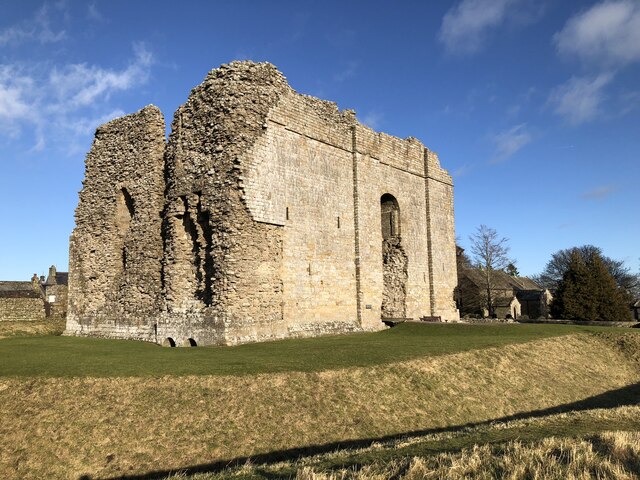
![Bowes houses [1] Bowes Hall, The Street, is a large house built in the early and later 17th century. The house was refronted and extended in the early or mid 18th century, when the two right bays and the top storey were added. Constructed of rubble stone, the later work squared and coursed, under a slate roof. Many original internal features and fittings remain. Listed, grade II, with details at: <span class="nowrap"><a title="https://historicengland.org.uk/listing/the-list/list-entry/1121071" rel="nofollow ugc noopener" href="https://historicengland.org.uk/listing/the-list/list-entry/1121071">Link</a><img style="margin-left:2px;" alt="External link" title="External link - shift click to open in new window" src="https://s1.geograph.org.uk/img/external.png" width="10" height="10"/></span>
Bowes is a village in County Durham, some 14 miles northwest of Richmond and about 18½ miles due west of Darlington. Set on the north bank of the River Greta, the village was, until by-passed, astride the A66 trunk road. The Romans had a fort here, guarding the Stainmore pass over the Pennines, and their site was reused by the Normans who built a castle. The village grew around the castle, and the name Bowes is first mentioned in a charter of 1148.](https://s2.geograph.org.uk/geophotos/07/33/30/7333050_16951f3a.jpg)
![Bowes features [1] The garden walls, gate piers and gates of Bowes Hall <a href="https://www.geograph.org.uk/photo/7333050">NY9913 : Bowes houses [1]</a> were erected in the mid 18th century. Squared, coursed rubble stone walls and ashlar gate piers with mid 19th century iron gates. Listed, grade II, with details at: <span class="nowrap"><a title="https://historicengland.org.uk/listing/the-list/list-entry/1310919" rel="nofollow ugc noopener" href="https://historicengland.org.uk/listing/the-list/list-entry/1310919">Link</a><img style="margin-left:2px;" alt="External link" title="External link - shift click to open in new window" src="https://s1.geograph.org.uk/img/external.png" width="10" height="10"/></span>
Bowes is a village in County Durham, some 14 miles northwest of Richmond and about 18½ miles due west of Darlington. Set on the north bank of the River Greta, the village was, until by-passed, astride the A66 trunk road. The Romans had a fort here, guarding the Stainmore pass over the Pennines, and their site was reused by the Normans who built a castle. The village grew around the castle, and the name Bowes is first mentioned in a charter of 1148.](https://s0.geograph.org.uk/geophotos/07/33/30/7333052_37337ce4.jpg)
![Bowes houses [2] Numbers 1 and 2 The Street are a pair of houses built in the mid or late 18th century with later alterations. Constructed of rubble stone under an artificial stone roof. Listed, grade II, with details at: <span class="nowrap"><a title="https://historicengland.org.uk/listing/the-list/list-entry/1159738" rel="nofollow ugc noopener" href="https://historicengland.org.uk/listing/the-list/list-entry/1159738">Link</a><img style="margin-left:2px;" alt="External link" title="External link - shift click to open in new window" src="https://s1.geograph.org.uk/img/external.png" width="10" height="10"/></span>
Bowes is a village in County Durham, some 14 miles northwest of Richmond and about 18½ miles due west of Darlington. Set on the north bank of the River Greta, the village was, until by-passed, astride the A66 trunk road. The Romans had a fort here, guarding the Stainmore pass over the Pennines, and their site was reused by the Normans who built a castle. The village grew around the castle, and the name Bowes is first mentioned in a charter of 1148.](https://s1.geograph.org.uk/geophotos/07/33/30/7333053_35f3ac31.jpg)
![Bowes buildings [1] Bowes Club, formerly the Bowes and District Working Men&#039;s Club, in The Street, was built as a house in the early or mid 18th century. Constructed of sandstone ashlar under a stone slate roof. The link section on the left is in rubble stone. The paired sashes windows have small lunette windows above. Listed, grade II, with details at: <span class="nowrap"><a title="https://historicengland.org.uk/listing/the-list/list-entry/1323029" rel="nofollow ugc noopener" href="https://historicengland.org.uk/listing/the-list/list-entry/1323029">Link</a><img style="margin-left:2px;" alt="External link" title="External link - shift click to open in new window" src="https://s1.geograph.org.uk/img/external.png" width="10" height="10"/></span>
Bowes is a village in County Durham, some 14 miles northwest of Richmond and about 18½ miles due west of Darlington. Set on the north bank of the River Greta, the village was, until by-passed, astride the A66 trunk road. The Romans had a fort here, guarding the Stainmore pass over the Pennines, and their site was reused by the Normans who built a castle. The village grew around the castle, and the name Bowes is first mentioned in a charter of 1148.](https://s2.geograph.org.uk/geophotos/07/33/30/7333054_cccc0490.jpg)
![Bowes houses [3] Croft House and Sunny Croft, The Street, are a pair of houses built in the late 18th century and extended on both sides. Constructed of coursed rubble stone under a stone slate roof. Listed, for group value, grade II, with details at: <span class="nowrap"><a title="https://historicengland.org.uk/listing/the-list/list-entry/1121033" rel="nofollow ugc noopener" href="https://historicengland.org.uk/listing/the-list/list-entry/1121033">Link</a><img style="margin-left:2px;" alt="External link" title="External link - shift click to open in new window" src="https://s1.geograph.org.uk/img/external.png" width="10" height="10"/></span>
Bowes is a village in County Durham, some 14 miles northwest of Richmond and about 18½ miles due west of Darlington. Set on the north bank of the River Greta, the village was, until by-passed, astride the A66 trunk road. The Romans had a fort here, guarding the Stainmore pass over the Pennines, and their site was reused by the Normans who built a castle. The village grew around the castle, and the name Bowes is first mentioned in a charter of 1148.](https://s2.geograph.org.uk/geophotos/07/33/30/7333058_842b947b.jpg)
![Bowes buildings [2] The Ancient Unicorn Hotel, The Street, a former coaching inn, has a rear wing of the 17th century, in two builds, which was altered and refronted. The front block is mid 18th century. The front block is of squared, coursed sandstone with squared, coursed rubble stone returns and rusticated quoins, under a slate roof; stone chimney stacks. The rear wing is of squared, coursed rubble stone with partly stone slate and partly slate roofs. Some early internal features and fittings remain. The building is reputedly haunted. Listed, grade II, with details at: <span class="nowrap"><a title="https://historicengland.org.uk/listing/the-list/list-entry/1323027" rel="nofollow ugc noopener" href="https://historicengland.org.uk/listing/the-list/list-entry/1323027">Link</a><img style="margin-left:2px;" alt="External link" title="External link - shift click to open in new window" src="https://s1.geograph.org.uk/img/external.png" width="10" height="10"/></span>
Bowes is a village in County Durham, some 14 miles northwest of Richmond and about 18½ miles due west of Darlington. Set on the north bank of the River Greta, the village was, until by-passed, astride the A66 trunk road. The Romans had a fort here, guarding the Stainmore pass over the Pennines, and their site was reused by the Normans who built a castle. The village grew around the castle, and the name Bowes is first mentioned in a charter of 1148.](https://s1.geograph.org.uk/geophotos/07/33/30/7333093_40cd01c6.jpg)
![Bowes features [2] An elderly RAC &#039;Get You Home&#039; sign in The Street.
Bowes is a village in County Durham, some 14 miles northwest of Richmond and about 18½ miles due west of Darlington. Set on the north bank of the River Greta, the village was, until by-passed, astride the A66 trunk road. The Romans had a fort here, guarding the Stainmore pass over the Pennines, and their site was reused by the Normans who built a castle. The village grew around the castle, and the name Bowes is first mentioned in a charter of 1148.](https://s0.geograph.org.uk/geophotos/07/33/31/7333148_94906e75.jpg)
![Bowes houses [5] Cross House and Hill House, The Street, are a pair of houses, built circa 1840 with later alterations. Constructed of squared, coursed rubble stone under a stone slate roof. Listed, grade II, with details at: <span class="nowrap"><a title="https://historicengland.org.uk/listing/the-list/list-entry/1323028" rel="nofollow ugc noopener" href="https://historicengland.org.uk/listing/the-list/list-entry/1323028">Link</a><img style="margin-left:2px;" alt="External link" title="External link - shift click to open in new window" src="https://s1.geograph.org.uk/img/external.png" width="10" height="10"/></span>
Bowes is a village in County Durham, some 14 miles northwest of Richmond and about 18½ miles due west of Darlington. Set on the north bank of the River Greta, the village was, until by-passed, astride the A66 trunk road. The Romans had a fort here, guarding the Stainmore pass over the Pennines, and their site was reused by the Normans who built a castle. The village grew around the castle, and the name Bowes is first mentioned in a charter of 1148.](https://s2.geograph.org.uk/geophotos/07/33/31/7333162_b6a851c2.jpg)
![Bowes features [3] In the garden of Cross House on The Street <a href="https://www.geograph.org.uk/photo/7333162">NY9913 : Bowes houses [5]</a> is this base and stump of a cross shaft. Medieval, of sandstone. Listed, grade II, with details at: <span class="nowrap"><a title="https://historicengland.org.uk/listing/the-list/list-entry/1159719" rel="nofollow ugc noopener" href="https://historicengland.org.uk/listing/the-list/list-entry/1159719">Link</a><img style="margin-left:2px;" alt="External link" title="External link - shift click to open in new window" src="https://s1.geograph.org.uk/img/external.png" width="10" height="10"/></span>
Bowes is a village in County Durham, some 14 miles northwest of Richmond and about 18½ miles due west of Darlington. Set on the north bank of the River Greta, the village was, until by-passed, astride the A66 trunk road. The Romans had a fort here, guarding the Stainmore pass over the Pennines, and their site was reused by the Normans who built a castle. The village grew around the castle, and the name Bowes is first mentioned in a charter of 1148.](https://s1.geograph.org.uk/geophotos/07/33/42/7334253_0e313df9.jpg)
Square Plantation is located at Grid Ref: NY9912 (Lat: 54.508179, Lng: -2.0165846)
Division: North Riding
Unitary Authority: County Durham
Police Authority: Durham
What 3 Words
///cabbage.collapsed.turns. Near Bowes, Co. Durham
Nearby Locations
Related Wikis
Bowes Castle
Bowes Castle is a medieval castle in the village of Bowes in County Durham, England. Built within the perimeter of the former Roman fort of Lavatrae, on...
Bowes
Bowes is a village in the historic county of Yorkshire and, since 1974, in the ceremonial county of County Durham, England. Located in the Pennine hills...
Bowes railway station
Bowes railway station was situated on the South Durham & Lancashire Union Railway between Barnard Castle and Kirkby Stephen East. == History == The line...
Gilmonby
Gilmonby is a village in the Pennines in County Durham, England. it is situated a short distance to the south of Bowes, in the vicinity of Barnard Castle...
Nearby Amenities
Located within 500m of 54.508179,-2.0165846Have you been to Square Plantation?
Leave your review of Square Plantation below (or comments, questions and feedback).
